Abstract
The effects of chronic feeding of low levels of lead on various cells of the rat immune system have been investigated. In the presence of Con A and PHA, lead appears to increase blastogenesis up to approximately 5 weeks with activity approaching that of the unleaded control cells at 14 weeks. B cells responded with increased mitogenicity in the presence of LPS up to the time of termination of the experiment (14 weeks). Macrophage activity and number in the lead-fed rat showed consistent decrease and eventual morphological impairment. It is hypothesized that lead has mitogen-like activity but disruption of macrophage-T cell interaction occurs with time.
Full text
PDF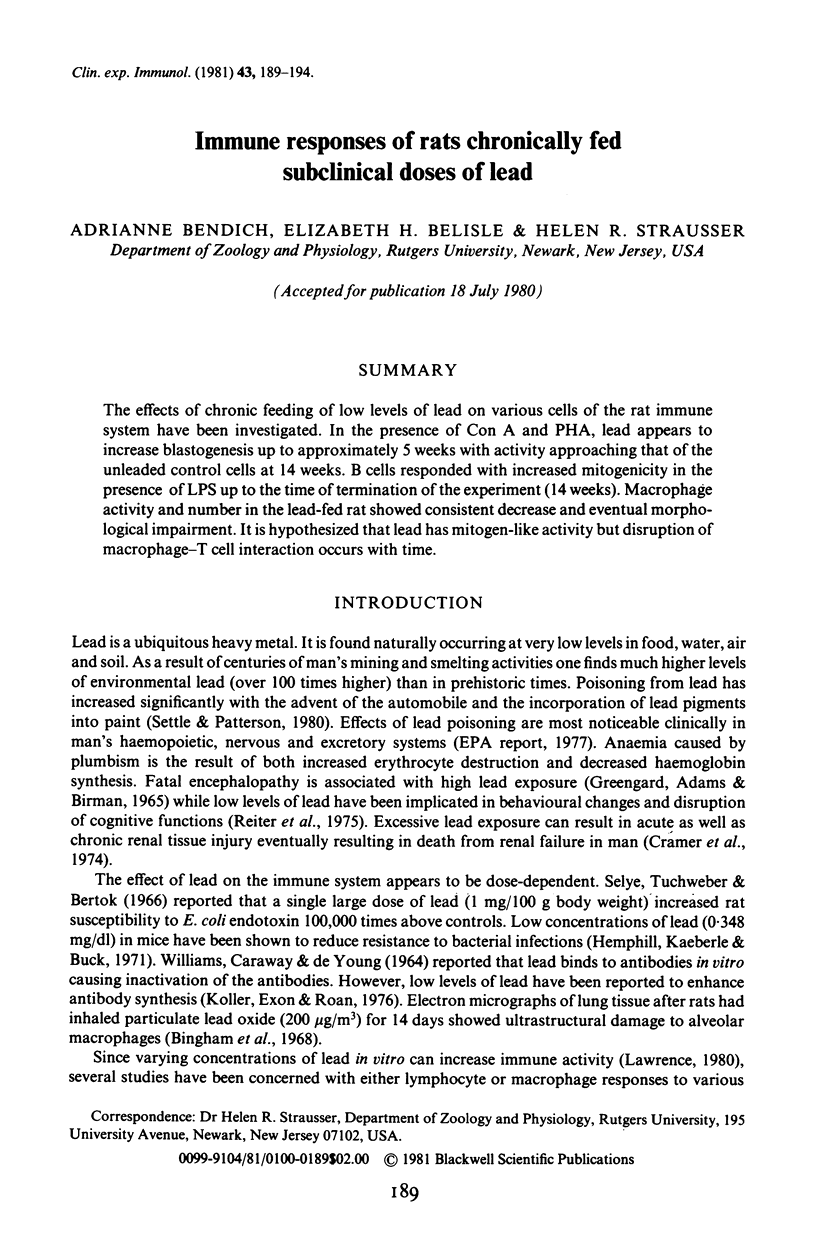
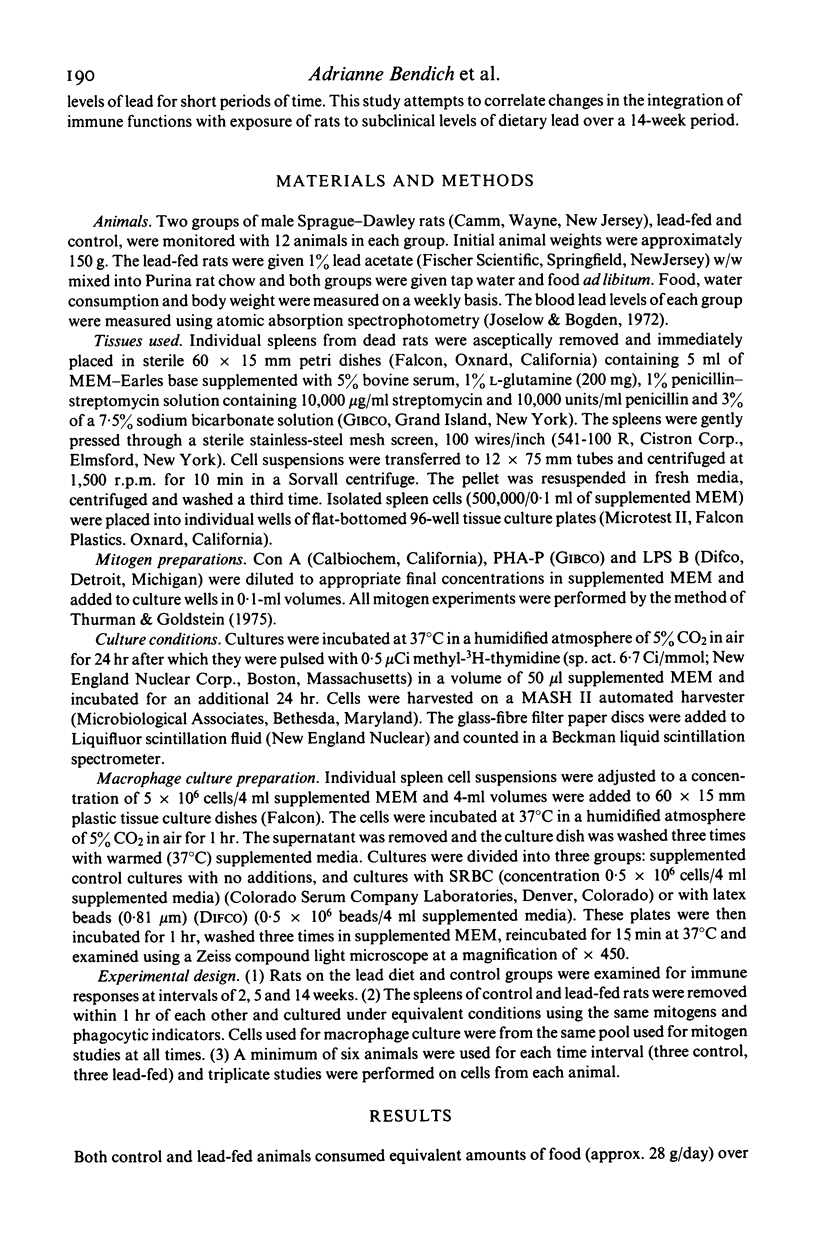
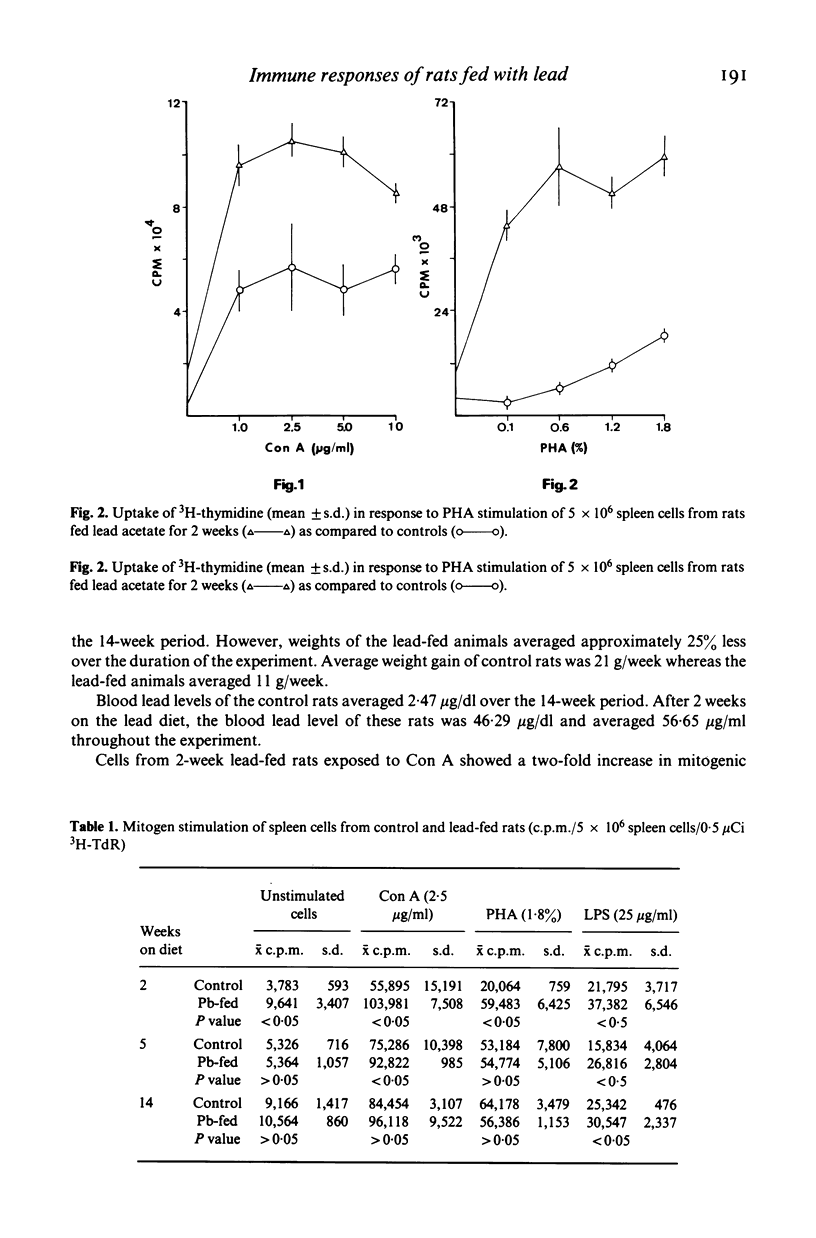
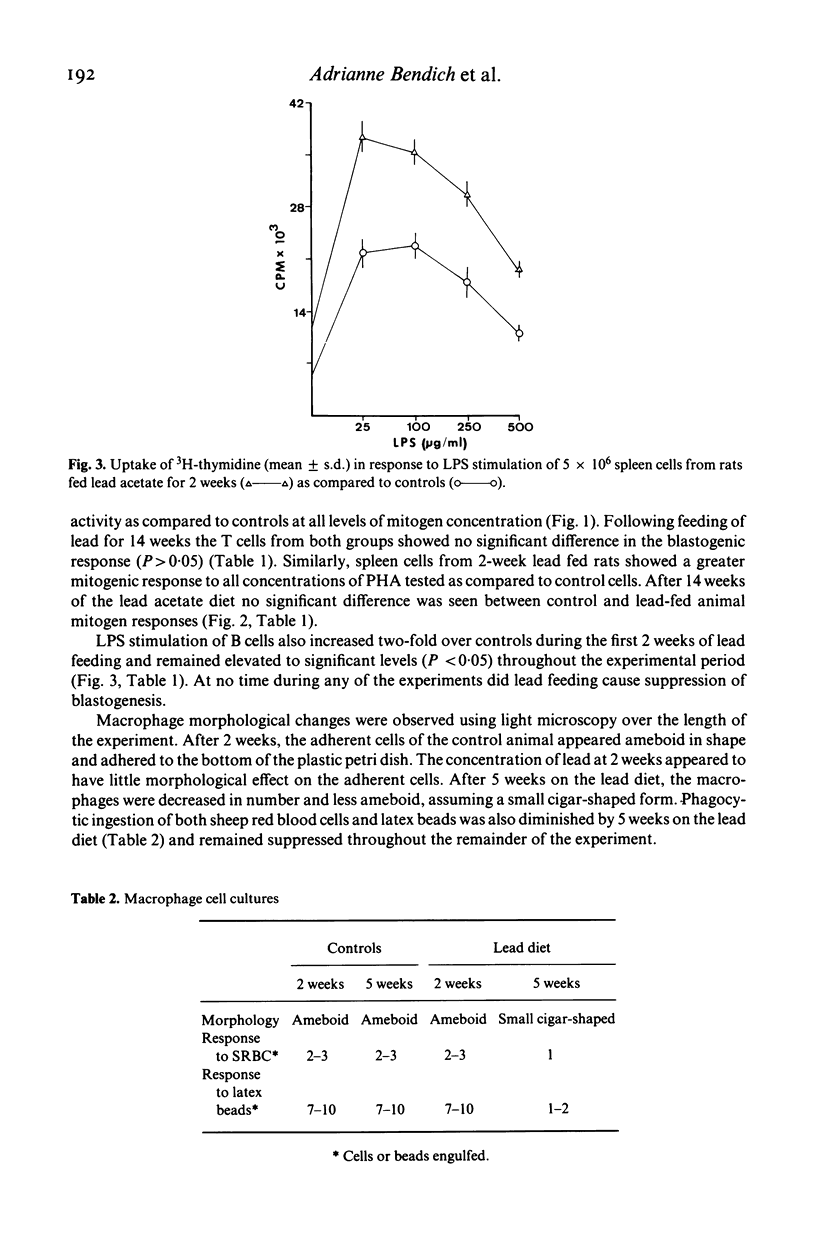
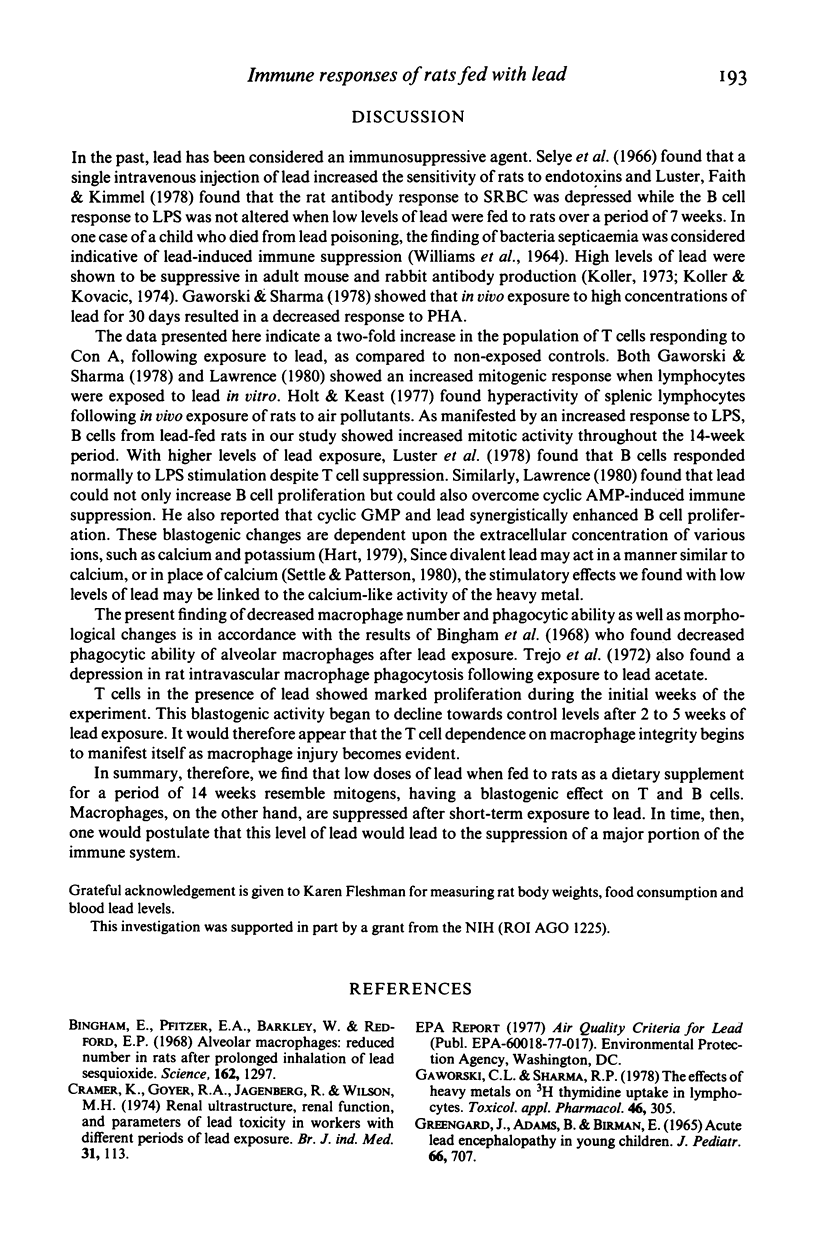
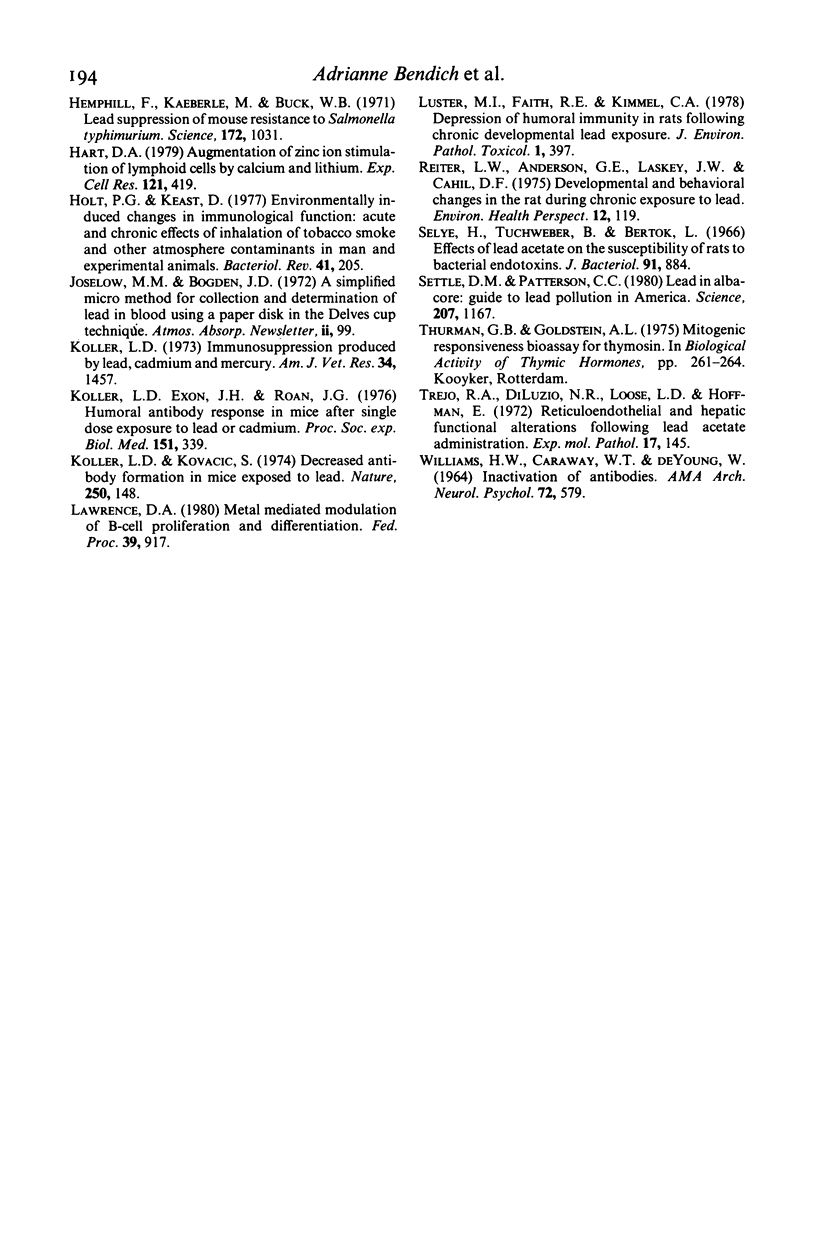
Selected References
These references are in PubMed. This may not be the complete list of references from this article.
- Bingham E., Pfitzer E. A., Barkley W., Radford E. P. Alveolar macrophages: reduced number in rats after prolonged inhalation of lead sesquioxide. Science. 1968 Dec 13;162(3859):1297–1299. doi: 10.1126/science.162.3859.1297. [DOI] [PubMed] [Google Scholar]
- Cramér K., Goyer R. A., Jagenburg R., Wilson M. H. Renal ultrastructure, renal function, and parameters of lead toxicity in workers with different periods of lead exposure. Br J Ind Med. 1974 Apr;31(2):113–127. doi: 10.1136/oem.31.2.113. [DOI] [PMC free article] [PubMed] [Google Scholar]
- GREENGARD J., ADAMS B., BERMAN E. ACUTE LEAD ENCEPHALOPATHY IN YOUNG CHILDREN. J Pediatr. 1965 Apr;66:707–711. doi: 10.1016/s0022-3476(65)80004-x. [DOI] [PubMed] [Google Scholar]
- Gaworski C. L., Sharma R. P. The effects of heavy metals on [3H]thymidine uptake in lymphocytes. Toxicol Appl Pharmacol. 1978 Nov;46(2):305–313. doi: 10.1016/0041-008x(78)90076-5. [DOI] [PubMed] [Google Scholar]
- Hart D. A. Augmentation of zinc ion stimulation of lymphoid cells by calcium and lithium. Exp Cell Res. 1979 Jul;121(2):419–425. doi: 10.1016/0014-4827(79)90024-7. [DOI] [PubMed] [Google Scholar]
- Hemphill F. E., Kaeberle M. L., Buck W. B. Lead suppression of mouse resistance to Salmonella typhimurium. Science. 1971 Jun 4;172(3987):1031–1032. doi: 10.1126/science.172.3987.1031. [DOI] [PubMed] [Google Scholar]
- Holt P. G., Keast D. Environmentally induced changes in immunological function: acute and chronic effects of inhalation of tobacco smoke and other atmospheric contaminants in man and experimental animals. Bacteriol Rev. 1977 Mar;41(1):205–216. doi: 10.1128/br.41.1.205-216.1977. [DOI] [PMC free article] [PubMed] [Google Scholar]
- Koller L. D., Exon J. H., Roan J. G. Humoral antibody response in mice after single dose exposure to lead or cadmium. Proc Soc Exp Biol Med. 1976 Feb;151(2):339–342. doi: 10.3181/00379727-151-39205. [DOI] [PubMed] [Google Scholar]
- Koller L. D. Immunosuppression produced by lead, cadmium, and mercury. Am J Vet Res. 1973 Nov;34(11):1457–1458. [PubMed] [Google Scholar]
- Koller L. D., Kovacic S. Decreased antibody formation in mice exposed to lead. Nature. 1974 Jul 12;250(462):148–150. doi: 10.1038/250148a0. [DOI] [PubMed] [Google Scholar]
- Luster M. I., Faith R. E., Kimmel C. A. Depression of humoral immunity in rats following chronic developmental lead exposure. J Environ Pathol Toxicol. 1978 Mar-Apr;1(4):397–402. [PubMed] [Google Scholar]
- Reiter L. W., Anderson G. E., Laskey J. W., Cahill D. F. Developmental and behavioral changes in the rat during chronic exposure to lead. Environ Health Perspect. 1975 Dec;12:119–123. doi: 10.1289/ehp.7512119. [DOI] [PMC free article] [PubMed] [Google Scholar]
- Selye H., Tuchweber B., Bertók L. Effect of lead acetate on the susceptibility of rats to bacterial endotoxins. J Bacteriol. 1966 Feb;91(2):884–890. doi: 10.1128/jb.91.2.884-890.1966. [DOI] [PMC free article] [PubMed] [Google Scholar]
- Settle D. M., Patterson C. C. Lead in albacore: guide to lead pollution in Americans. Science. 1980 Mar 14;207(4436):1167–1176. doi: 10.1126/science.6986654. [DOI] [PubMed] [Google Scholar]
- Trejo R. A., Di Luzio N. R., Loose L. D., Hoffman E. Reticuloendothelial and hepatic functional alterations following lead acetate administration. Exp Mol Pathol. 1972 Oct;17(2):145–158. doi: 10.1016/0014-4800(72)90064-0. [DOI] [PubMed] [Google Scholar]
- WILLIAMS H. W., CARAWAY W. T., DE YOUNG W. A. Inactivation of antibodies, a causative factor of brain pathology in acute lead intoxication. AMA Arch Neurol Psychiatry. 1954 Nov;72(5):579–582. [PubMed] [Google Scholar]


